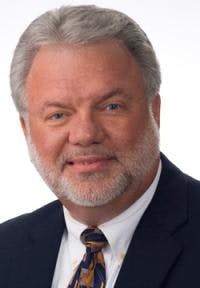Why you can't have a successful organization without maintenance
Fred Dunbrack is president of Dunbrack Consulting (DCI) in Dundas, Ontario. He was the chair of the Society for Maintenance & Reliability Professionals (SMRP) in 2000-’01, when he also was the manager of predictive technology services at Dofasco, which, at that time, was the second largest integrated steel mill in Canada.
PS: What are the big changes you've seen in maintenance and reliability from when you were SMRP chair to now?
FD: The biggest changes I’ve seen are the people who really started to recognize that maintenance wasn’t just a repair thing. It was something that was important to the success of an organization. People really recognize that reliability has a tremendous impact on all of the other things that manufacturing facilities consider important. If your equipment isn’t reliable, it will affect your safety record, it will affect your ability to deliver on time, and it has a huge impact on making first-pass quality every time. That knowledge has grown over the past 15 years. The maintenance world understood it, but the rest of the organization is predominantly production-driven, and it’s taken that side of the organization some time to take ownership of the equipment and understand it isn’t just about getting the pounds or the tons or the product out the door and letting the rest look after itself. If they don’t get it correct, they won’t get the pounds, the tons, or the product.
PS: What is the one accomplishment under your leadership that you're most proud of?
FD: We had great people; many of them I had the privilege of working with are now past chairs themselves. Everybody did the stepping stones through the executive committee. Because I was involved early, even before I became chair, the thing I’m most proud of is SMRPCO, the society’s certifying organization. A gentleman named Brad Peterson from SAMI and I were the first two people to put our hands in the air and say we really needed something that gives the maintenance guy some credibility and status. I grew up in heavy industry that was very slow to change, and I remember feeling like the redheaded stepchild. If it broke, it was my fault. If it didn’t run when it was supposed to, it was my fault. If it didn’t start when it was supposed to, it was my fault. I really am proud of what SMRP as a whole has done to change that mindset. It makes me proud that Brad and I had a little to do with SMRPCO because we volunteered, but there are hundreds of people who had something to do with making that a success. The one thing I am proud of is that two of my colleagues at Dofasco and I were the first three people to be certified in Canada. As we say in Canada, “We’re the original SMRPs, eh?”
PS: Who in the SMRP organization had the biggest influence on you and your career?
PS: Where is the maintenance and reliability profession headed, and where would you like to see it go?
FD: I like where it is right now. I like what it’s done. This is an evolution, and it’s gone much faster than I ever could have imagined. As I work with companies in North America as a consultant, one of the biggest issues they’re facing now is that there aren’t enough technicians out there. Every organization has an aging demographic. I was in an organization recently, and they projected that, in the next five years, they’re going to lose 50-65% of their current maintenance workforce. That’s an issue North America is facing. It seems like the young professionals of today want to wear the white smock or the shirt and tie and want to work in power generation or something to do with software. When I was at Dofasco, I used to go to the universities and give presentations. These young faces would ask if they could wear a white shirt and tie, and I’d say, “No. It’s fire-retardant clothing and metatarsal boots and ear protection and hard hats and eye protection, but everything you’ve been educated about and been training for, I can put it in front of you, and you get to touch it and feel it and work on it and play with it and make it better.” Somehow, it seems it’s more important that they get to dress comfortably and work flexible hours, and I find that disheartening. I think SMRP has done a good job of partnering with universities. Everybody doesn’t have to be an engineer. We need reliability at the technician level. That’s the biggest challenge that manufacturing throughout North America faces over the next 10-20 years and beyond that. If we’re going to stay in the business of manufacturing and lead the world, you’ve got to have people who can fulfill all the roles. That’s where the society needs to go.

